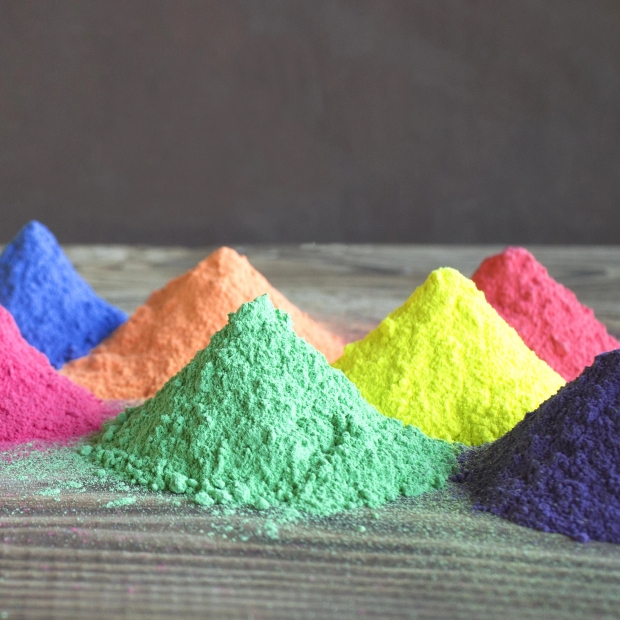Photochromic Material
A. Principle
When photochromic material absorbs UV ray energy (such as sunlight, UV-A, and UV-B rays), its molecular structure changes and reverts to colored. Upon removing or leaving the lights, the molecular structure gradually returns to its original state, and reverts to colorless.
Through microencapsulation technology, photochromic op dye and medium are encapsulated into pigments. It can color-change directly when exposed to lights without the need for medium. Additionally, photochromic pigments have fabulous heat resistance, solvent resistance, and stable coloration.
B. Product Information
Specification:Standard
Particle Size:3~10μm
Absorbance:280~400nm
Certification:EN-71-3, RoHS
Standard Colors:
Colors (For reference only)
 |
 |
 |
 |
|
#31 New Magenta
|
#32 Red
|
#33 Grenadine
|
#34 Carmine
|
 |
 |
 |
 |
|
#41 New Orange
|
#51 New Yellow
|
#61 Green
|
#62 Dark Jungle Green
|
 |
 |
 |
 |
|
#71 New Blue
|
#72 Turkish
|
#73 Canal Blue
|
#81 New Purple
|
 |
 |
 |
 |
|
#82 Deep Purple Blue
|
#83 Vivid Reddish Purple
|
#84 Amethyst
|
#91 Dark Charcoal Grey
|
(The above colors are for reference only.)
C. Available Forms & Applicability:
| No. | Forms | Slurry | Powder | Masterbatch |
|---|---|---|---|---|
| 01 | Solvent:Ink, Paint | Suggest Concentrations:5~60%w/w(25%) |
||
| 02 | Aqueous:Ink, Paint | Suggest Concentrations:5~30%w/w(25%) |
Suggest Concentrations:5~30%w/w(25%) |
|
| 03 | Plastic Injection, Extrusion | Suggest Concentrations:0.1~5%w/w(0.5%) |
Suggest Concentrations:1~5%w/w(4%) |
:Applicable、 :Conditionally Applicable、 :Not Applicable。
D. Notice:
1.Avoid using polarity solvents such as alcohols (methanol, ethanol), ketones (acetone, butanone) …etc.
2.It’s normal phenomenon the slurry clumps up, if it occurs, please double boil the slurry at 45°C, and stir gently until uniform before using.
3.Processing temperature should not exceed 200°C.
4.Photochromic materials and products should be sealed and kept in dark to prevent UV aging that will affect color-changing function.
5.When adding UV absorbers, it’s essential to confirm the absorption wavelength of op dye, and choose a suitable UV absorber to prevent inadequate coloration.

